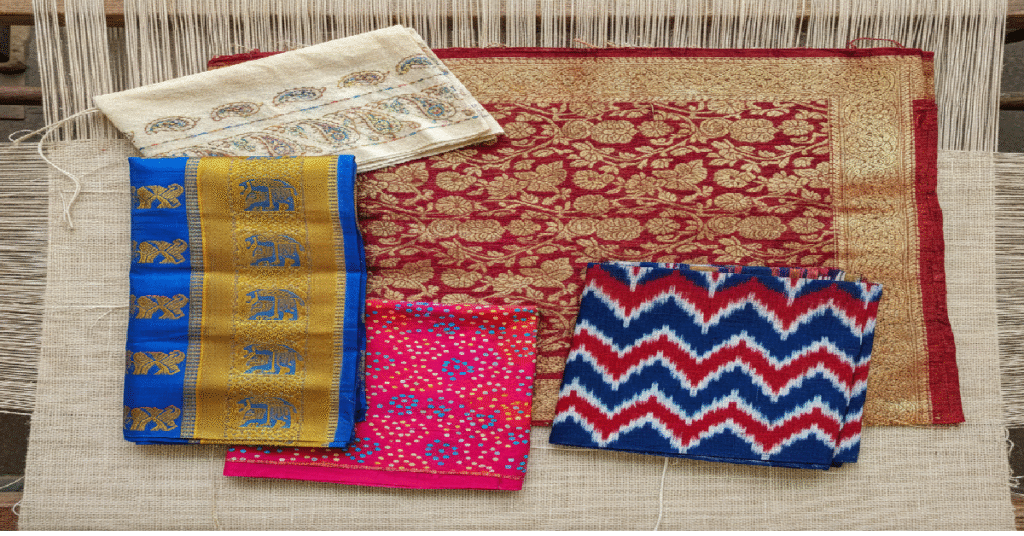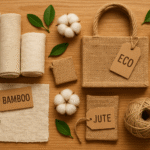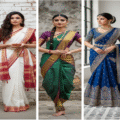India’s textile history is not just about fabric—it is a cultural story woven through thousands of years. Every region, every community, and every era contributed unique styles, techniques, and traditions that make Indian textiles world-renowned. From the cotton fields of the Indus Valley to the catwalks of Paris and New York, Indian weaves have traveled far and wide.
This article explores the complete journey of Indian textiles, their evolution, cultural role, global trade, colonial decline, and modern revival.
🌍 Early Origins – Indus Valley Civilization (c. 2500 BCE)
The Indus Valley Civilization (Harappa & Mohenjo-Daro) gives us the first glimpses of India’s textile tradition.
- Archaeologists discovered spindle whorls, bone needles, loom weights, and cotton fragments.
- The people of the Indus Valley were among the first in the world to spin and weave cotton.
- Evidence of dyeing techniques using madder (red) and indigo (blue) has also been found.
- In fact, woven cotton fragments discovered in Mohenjo-Daro date back nearly 4,500 years.
✨ As a result, cotton weaving from India later influenced Egypt, Rome, and other ancient civilizations.
📜 Textiles in the Vedic & Epic Age (1500–500 BCE)
During the Vedic period, references to textiles became more frequent. The Rigveda and Atharvaveda describe garments such as:
- Nivi (lower garment)
- Vasa (upper cloth)
- Adhivasa (outer wrap)
In addition, dyes were extracted from plants, minerals, and insects. Common colors included yellow (turmeric), red (madder), and indigo (blue).
👉 Therefore, clothes carried not only functional value but also spiritual significance—white for purity, saffron for sacrifice, and bright shades for prosperity.
🏛️ Mauryan & Buddhist Period (322–185 BCE)
During the Mauryan Empire, textiles gained both commercial and cultural importance.
- Greek historian Megasthenes described Indians as wearing “garments of fine cotton.”
- Buddhist monks adopted ochre/saffron robes, dyed with natural extracts.
- Sanchi & Bharhut sculptures show men and women in draped clothing resembling saris and dhotis.
Moreover, India’s fabrics became major exports to Sri Lanka, China, and Central Asia, strengthening trade networks.
👑 Gupta Empire – The Golden Age (4th–6th Century CE)
The Gupta Empire advanced textile artistry further.
- Silk weaving centers thrived in Bengal, Kanchipuram, and Tamil Nadu.
- Fine cottons became famous exports through Silk Road trade.
- Decorative fabrics included floral, animal, and mythological motifs.
- Ancient literature such as Kamasutra described luxurious fabrics like silk, brocade, and muslin.
Thus, this era represents the fusion of fashion, religion, and trade in India’s textile evolution.
🕌 Medieval & Sultanate Era (12th–16th Century)
The Sultanate period introduced Persian and Islamic influences.
- Zardozi embroidery (gold and silver thread work) became prominent.
- Rich fabrics such as velvet, satin, and brocade entered Indian courts.
- New weaving centers emerged in Gujarat and Delhi.
Consequently, Indian textiles became more ornamental and decorative, blending local traditions with imported motifs.
🌟 Mughal Era – The Pinnacle of Textile Glory (16th–18th Century)
The Mughal period is often called the golden chapter of Indian textiles. Their patronage elevated weaving, dyeing, and embroidery to unparalleled heights.
Key Mughal Fabrics and Crafts
- Muslin (Dhaka, Bengal) – so fine it was described as “woven air.”
- Jamdani Weaves – floral patterns woven into muslin.
- Banarasi Brocades – luxurious silk with gold & silver zari.
- Pashmina Shawls (Kashmir) – admired worldwide for their softness.
- Chikankari (Lucknow) – delicate white embroidery.
- Kalamkari (Andhra) – hand-painted storytelling fabrics.
Mughal Patronage of Textiles
Moreover, emperors established Karkhanas (royal workshops), where master weavers produced exclusive textiles for the nobility. These workshops ensured quality control, nurtured innovation, and elevated Indian fabrics to global prestige.
👉 As a result, Indian fabrics became coveted luxury items across Persia, Central Asia, and Europe.
🚢 Colonial Era – Decline of Indian Textiles
By the 17th century, Indian cottons dominated global trade. European merchants imported vast amounts of calicos, chintz, and bandannas.
The Industrial Revolution’s Impact
However, the Industrial Revolution in Britain reversed India’s fortune:
- British mills mass-produced cheap cotton, undercutting Indian handlooms.
- Bengal’s muslin industry collapsed under harsh trade policies.
- Artisans lost livelihoods, while weaving centers declined.
- India became a raw cotton exporter, feeding British mills instead of exporting finished fabrics.
Consequences of Colonial Exploitation
⚠️ Consequently, colonial exploitation nearly destroyed India’s ancient textile traditions. The decline was not only economic but also cultural, as centuries-old skills faced extinction.
🕊️ Textiles in the Freedom Struggle
Despite decline, textiles became a powerful weapon of resistance.
- Mahatma Gandhi promoted Khadi as a symbol of self-reliance.
- The Charkha (spinning wheel) embodied independence.
- Wearing Khadi became a political statement against foreign goods.
Therefore, even today, Khadi stands as a symbol of simplicity, dignity, and nationalism.
🎨 Post-Independence to Modern Era
After 1947, India rebuilt its textile sector.
- Handloom cooperatives were set up to protect artisans.
- Institutes like NIFT nurtured design talent.
- States promoted GI-tagged textiles such as Banarasi Sarees, Kanchipuram Silk, and Pashmina Shawls.
- Indian fabrics returned to global fashion runways.
Thus, India successfully blended modern textile production with heritage preservation.
🌈 Regional Diversity of Indian Textiles
| Region | Famous Textile | Unique Feature |
|---|---|---|
| Bengal | Muslin, Jamdani | Ultra-fine cotton, floral motifs |
| Uttar Pradesh | Banarasi Brocade, Chikankari | Gold zari, delicate embroidery |
| Tamil Nadu | Kanchipuram Silk | Temple motifs, rich silk |
| Kashmir | Pashmina Shawls | Soft wool, intricate patterns |
| Gujarat | Bandhani, Patola | Tie-dye & double ikat |
| Andhra Pradesh | Kalamkari | Hand-painted stories |
| Punjab | Phulkari | Bright floral embroidery |
| Odisha | Ikat | Resist-dyed weaving |
🌍 Global Influence of Indian Textiles
Indian textiles shaped world fashion. For instance, Egyptian mummies were wrapped in Indian cotton, Roman aristocrats wore muslin, and European fashion houses borrowed heavily from Indian calico and chintz.
As a result, words like calico, chintz, bandanna, and gingham trace their roots back to India.
🌿 Sustainability & Modern Revival
Indian handlooms are naturally sustainable. Furthermore, they:
- Use natural dyes instead of chemicals.
- Employ hand-spun fabrics that save energy.
- Promote slow fashion with eco-friendly production.
Therefore, modern designers such as Sabyasachi, Ritu Kumar, and Anita Dongre are reviving traditional Indian crafts with global appeal.
🙋 10 FAQs on Indian Textiles
Q1. What is the origin of Indian textiles?
👉 Indian textiles originated in the Indus Valley Civilization (c. 2500 BCE), where cotton weaving and natural dyeing were already practiced.
Q2. Why is India called the land of textiles?
👉 Because every region of India has its own unique weaving tradition, such as Banarasi silk, Kanchipuram silk, Pashmina shawls, and Bandhani.
Q3. What made Muslin world-famous?
👉 Muslin from Bengal was so fine and transparent that it was described as “woven air”, and therefore it became a luxury fabric in Europe and Asia.
Q4. How did Mughal rulers promote textiles?
👉 The Mughals established royal karkhanas (workshops) and supported weavers, which in turn led to masterpieces like Jamdani, Chikankari, and Brocade.
Q5. What happened to Indian textiles during British rule?
👉 The Industrial Revolution in Britain caused decline, since machine-made cotton replaced Indian handlooms, and artisans lost their traditional livelihood.
Q6. How did textiles contribute to India’s freedom struggle?
👉 Mahatma Gandhi promoted Khadi and the spinning wheel (Charkha), which became symbols of self-reliance and resistance to foreign goods.
Q7. Which Indian fabrics have GI tags?
👉 Fabrics such as Banarasi Sarees, Kanchipuram Silk, Pashmina Shawls, and Patola Ikat have Geographical Indication (GI) tags for authenticity.
Q8. What is the importance of handlooms today?
👉 Handlooms are vital because they are eco-friendly, sustainable, and culturally significant, while also supporting rural artisans.
Q9. How do Indian textiles influence global fashion?
👉 Indian fabrics like chintz, calico, and bandanna entered European fashion, and even today, global designers use Indian weaves in luxury collections.
Q10. Why is Indian textile heritage important?
👉 Because it represents cultural identity, traditional craftsmanship, and sustainable fashion, making it timeless and globally relevant.



